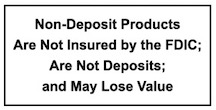If you’re a homeowner looking for ways to make the most of the equity in your home, a home equity line of credit (HELOC) may be a great financial tool to consider. HELOCs allow you to borrow against the equity in your home, and the funds can be used for a variety of purposes, from home renovations to debt consolidation.
In this blog, we’ll explore the different aspects of HELOCs, including how to apply for a HELOC and how you can qualify for one.
What is a HELOC?
A HELOC is a line of credit that is secured by the equity in your home. It works like a credit card, where you can borrow money up to a certain limit and then pay it back with interest over time. The amount you can borrow is determined by the value of your home and the amount of equity you have in it.
How to Apply for a HELOC
To apply for a HELOC, you’ll need to go through an application process. You’ll need to provide documentation of your income, assets, and credit history. While an appraisal is not always necessary, your home value must be determined. This can be done by using valuation models, or other valuation methods. It’s essential to evaluate more than just rates from different lenders to find the best HELOC for your needs. Be sure to review fees, including annual fees, closing costs, and pre-payment penalties. Most importantly, find a bank that you trust who can give you the proper advice on if a HELOC is right for your situation.
How Can I Qualify for a HELOC?
Qualifying for a HELOC depends on several factors, including your credit score, income, and the amount of equity you have in your home. Lenders typically require a credit score of at least 675 and a debt-to-income ratio of no more than 36%. In other words, the monthly debt payments you are responsible for should not exceed 36% of your total income. You’ll also need to have a certain amount of equity in your home, usually around 20% to 30% for a HELOC, since it’s the equity that you’re borrowing against to get the loan.
Using Your HELOC
Once you’re approved for a HELOC, you can use the funds for a variety of purposes. Some common uses for HELOCs include:
- Home improvements: Many homeowners use a HELOC to finance home renovations or repairs. These improvements can add value to the home and make it a more enjoyable place to live.
- Debt consolidation: If you have high-interest debt, such as credit card debt, you can use a HELOC to pay it off. Consolidating your debt into a single, low-interest payment can help you save money on interest and pay off your debt more quickly.
- Education expenses: If you or your children are planning to attend college or graduate school, a HELOC can help you finance those expenses.
- Emergency expenses: If you have unexpected expenses, such as medical bills or car repairs, a HELOC can provide a source of funds to cover those costs.
- Business expenses: Some entrepreneurs use a HELOC to finance their small business ventures.
While there are an abundance of ways to use a HELOC, It’s essential to use your HELOC responsibly and make sure you’re using the funds for a good reason. Remember, you’re borrowing against the equity in your home, and failing to make payments could result in foreclosure. It’s important before getting a HELOC to have a consultation with your banker or financial advisor to make sure that your plans for using a HELOC is best for your current financial situation. Hickory Point Bank offers an additional feature within our HELOCs, the Fixed Rate Conversion. This is helpful because borrowers can lock in a rate within the line of credit for larger balances and avoid the potential for rising interest rates.
In conclusion, a HELOC can be a great way to access the equity in your home and fund important projects or expenses. If you’re interested in learning more about HELOCs, we encourage you to visit a personal banker for a consultation. They can help you explore your options and determine the best HELOC for your financial success!



